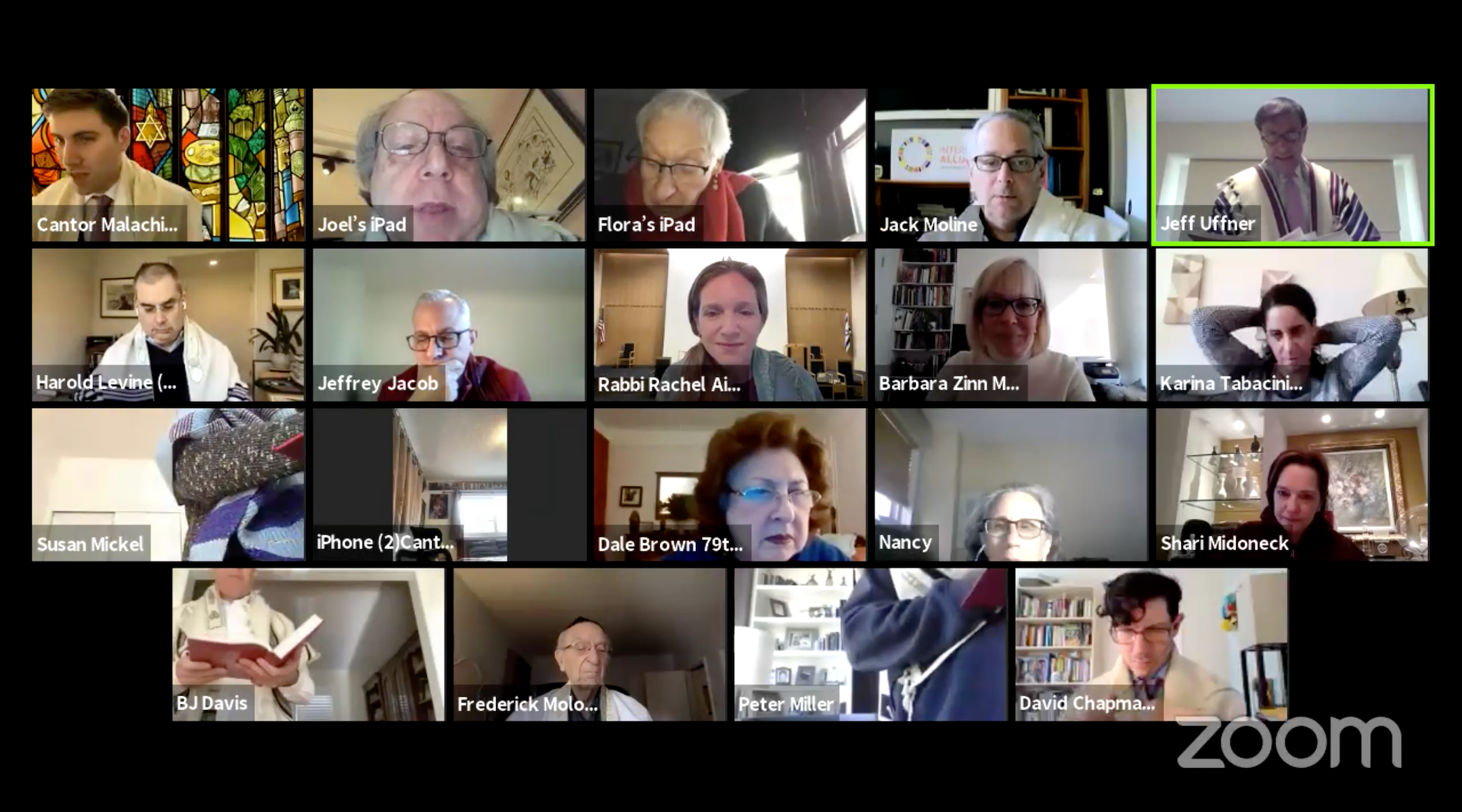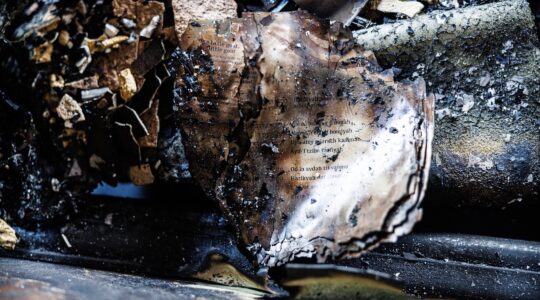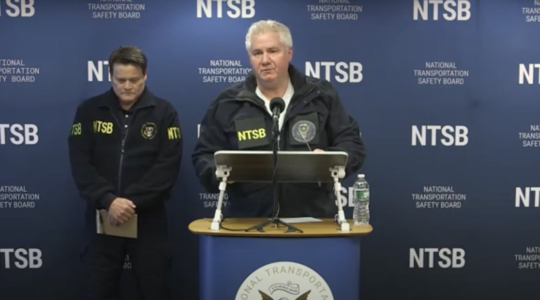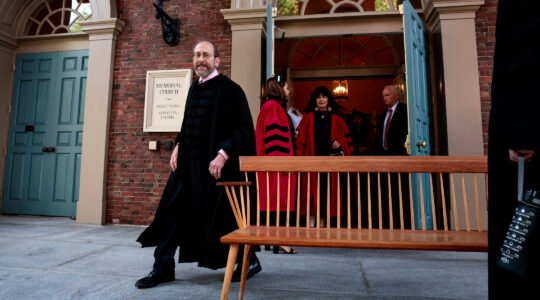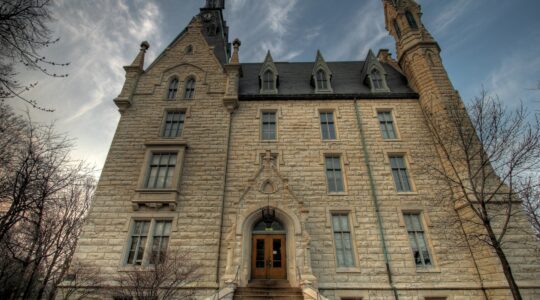(JTA) — On the first weekend of the coronavirus lockdowns in New York City in March 2020, Rabbi Rachel Ain decided that her Conservative synagogue would conduct Shabbat services online over Zoom, the videoconferencing platform then still largely confined to the business world but soon to become a household word.
Doing so technically violated a 2001 decision by the Conservative movement’s Jewish law authority, which had voted by overwhelming majority to bar the convening of an online prayer quorum, or minyan. But Ain didn’t see an alternative.
“I was ahead of them,” said Ain, who leads the Sutton Place Synagogue in New York City. “I made the decision for my community based on how I understood what my community needed at that moment.”
Days later, the heads of the Conservative movement’s Committee on Jewish Law and Standards would officially sanction Ain’s choice, allowing rabbis to temporarily ignore the 2001 ruling for the duration of the pandemic. Separately they issued an opinion, or teshuvah, permitting the limited use of Zoom on Shabbat, when use of electronic devices is severely circumscribed.
Those rulings, like many others issued across the Jewish world during the frightening early days of the pandemic, explicitly invoked sha’at had’chak — literally “a time of pressure,” a principle in Jewish law that permits a certain relaxation of customary rules in times of emergency. Now the law committee is preparing to formally consider whether the allowance for a Zoom minyan should outlive the pandemic.
At the Conservative movement’s rabbinical association conference in February, dozens of rabbis participated in a study group intended to guide the law committee in its consideration of the Zoom question. Looming over the deliberations was the legacy of another decision made by the Conservative movement in response to what once was perceived as an inexorable shift in Jewish communal life that had to be accommodated or risk the movement’s irrelevance: the great Jewish exodus to the suburbs.
Recognizing that large numbers of Jews who had left the city in the postwar period no longer lived within walking distance of a synagogue, the movement in the 1950s made a landmark decision to permit congregants to drive to synagogue on Shabbat — but nowhere else. The change led to the thriving of large suburban Conservative congregations in the middle decades of the 20th century, but it continues to be rued in some circles for having undermined the commitment to strict Shabbat observance.
“We are writing a new driving teshuvah,” said Rabbi Avram Reisner, a longtime law committee member widely seen as the body’s foremost traditionalist, referring to the choice to permit Zoom streaming on Shabbat.
Reisner loathes the driving decision for the same reasons he fears where the committee is moving on the Zoom question. In the view of many traditionalists in the movement, what was supposed to be a limited decision to accommodate families unable to walk to synagogue on Shabbat came to be seen as a broader license to drive, effectively eroding broad respect for Shabbat observance.
Reisner thinks the movement is about to make the same mistake again.
“Sociologically, as soon as you permit television and computers into your Shabbat, Shabbat is gone. It’s out the window. You’ve changed the tenor of observing Shabbat,” said Reisner, who retired from his Baltimore pulpit in 2015.
Like the driving decision, streaming has opened religious participation to those for whom it would otherwise have been impossible. Some synagogues have added daily prayer services during the pandemic, since the streaming technology has enabled greater participation. Many report that more people are logging in for services online than ever showed up in person.
That has been the case at Beth El Synagogue Center in New Rochelle, New York, where Friday night services via Zoom — streamed prior to the onset of Shabbat — attracts 100 worshippers every week. Before the pandemic, 15 would typically show up in person.
Yet Rabbi David Schuck has refrained from permitting interactive services on Shabbat or counting a prayer quorum for mourners online on other days, though the synagogue has been holding in-person services three times a day since July. In fact, he wrote a dissent in March 2020 to the Conservative movement’s emergency ruling allowing those practices.
Allowing online services on Shabbat “will create a new norm in communal prayer which will, in the long run, weaken communal bonds, lower the commitments that we can expect from people to show up for one another, and diminish the sanctity of Shabbat,” Schuck wrote.
Schuck acutely understood the consequences of that choice. New Rochelle was at the epicenter of one of the earliest coronavirus outbreaks in the United States, and his synagogue was inside the containment zone established by state authorities in March 2020 in an effort to stem the spread of the virus. Many members died in those first weeks.
“I think we had way over 20 funerals,” Schuck said. “And I was doing funerals of couples, like one person and then a week later their spouse. I mean, it was traumatic.”
The rabbi was under significant pressure to enable his congregants to recite the Mourner’s Kaddish, one of Judaism’s most emotionally resonant prayers, over Zoom. He also had a personal stake in the issue: His own father had died the previous November, and he was reciting the prayer for him daily when the pandemic struck.
But wary of the long-term effects of an emergency ruling, Schuck instead crafted an alternate ritual. He began teaching online each day a short passage from the Mishnah, the second-century code of Jewish law that, because its Hebrew letters are the same as the Hebrew for soul, is traditionally also understood as a way to elevate the spirit of the departed. He also began reciting a prayer composed by an Israeli rabbi as an alternative to the Mourner’s Kaddish.
Not everyone in his synagogue was pleased with the choice, he recalled.
“I understood their disappointment in my decision,” Schuck said. “But largely there wasn’t a rebellion here. And I would say we were very effective, if not more effective than ever before, in meeting the religious and emotional needs of people who had to say Kaddish.”
Ain, too, adapted in-person practices for the pandemic era — but reached a different conclusion about whether to permit a prayer quorum.
“What we did on daily minyan and Shabbat for months was not a carbon copy of what would have been experienced live in person altogether because I wanted to make that emotional, pastoral, religious distinction between what was and what wasn’t,” she said. “But we did count a minyan, no matter what.”
As the law committee prepares to consider the Zoom question, the potential consequences of a long-term allowance for Zoom services is weighing heavily even on those who have championed the technology. Rabbi Josh Heller, who wrote the paper permitting Zoom use on Shabbat, and even negotiated with the company to implement changes to the software that would mitigate the potential for violating Jewish law, said both the suburban exodus and the long-term impact of the pandemic represent epochal shifts in Jewish life.
How the Conservative movement responds, he said, will echo for decades to come.
“I lose a lot of sleep over this,” Heller said. “I really feel like in some ways the Conservative movement defines the mainstream of American Jewry and is really the glue that holds together a right and a left that keep on wanting to head off in different directions. And to that extent, where we go does provide a great amount of steering for the American Jewish community as a whole.”
Relieved of the pressure to make a quick choice about how to respond to a rapidly unfolding public health crisis, Ain is moving more deliberately in considering how to structure services in a post-pandemic world and says she will take into account whatever guidance the law committee ultimately provides. But her synagogue expects to continue the use of Zoom in some capacity, including possibly offering participation in the service to those who are physically remote.
“What we’ve learned is that if people are home and watching and trying to engage, they want to have a meaningful experience as well,” Ain said. “And they are not not coming because they don’t like shul, they’re not not coming because something’s holding them back. And so we want to give them a meaningful experience at home. And so we’re exploring what technologies we need for that.”
Ain said three times as many people are attending services now than before the pandemic. Attendance on Friday night has jumped from about 35 to 70 each week, she said, and as many as four times as many people attend weekday services.
“It has not given them an excuse out, it has given them a way to opt into religious life,” Ain said. “And that has been a profound change, that we have reached people that we didn’t even know we could reach.”
JTA has documented Jewish history in real-time for over a century. Keep our journalism strong by joining us in supporting independent, award-winning reporting.
